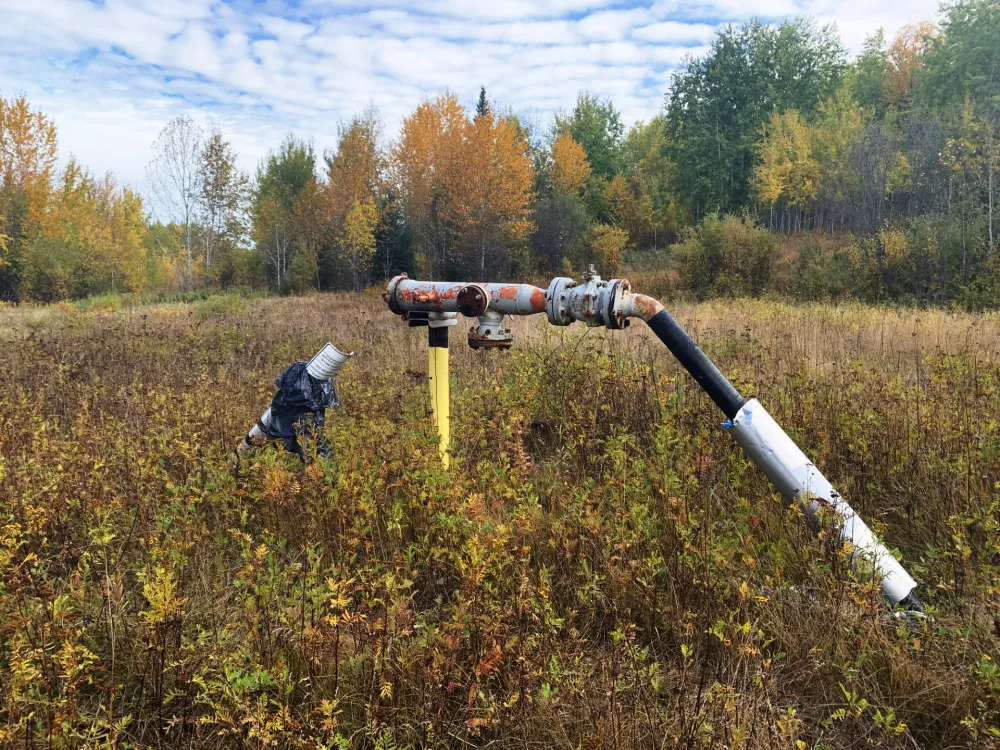For all the economic benefits that Alberta’s storied history of oil and gas development has produced, there are staggering economic and environmental liabilities that now threaten the land, the people, and the public purse – including almost 80,000 inactive wells needing closure and clean-up, many of which are left to decay and leak methane for decades. We always knew that every well drilled would need to be cleaned up at the end of its life – and that it would cost money to do so. The government made a deal with industry: it could develop the resources of the land and profit from it, so long as it cleaned up after itself. But decades of weak government policies have failed to hold industry accountable to that deal, as companies have walked away from thousands of wells across Alberta when they stopped being profitable. Alberta’s Mature Asset Strategy (MAS) is just the latest example.
The MAS is a government report, initially leaked to the media in March 2025, that makes 21 policy recommendations for how to better manage aging oil and gas infrastructure. It’s based on closed-door engagements with working groups that discussed topics such as unpaid taxes and land rents, closure liability funding, and closure regulations. Most of the MAS recommendations either do nothing to address the growing problem of end-of-life liabilities – or threaten to make it worse.
Albertans are having none of it. The Rural Municipalities of Alberta criticized the engagement process for being one-sided and not grounded in evidence. Landowners are furious at the prospect of using taxpayer dollars to clean up private industry’s mess. Legal experts call the strategy smoke and mirrors.
Bad policy with a bad pedigree
The strategy is a successor to the widely-criticized RStar program, an industry brainchild that proposed that the Government of Alberta would pay companies to fulfill industry’s legal obligations, by giving them royalty credits for cleaning up old oil wells. The MAS similarly flouts the principle that polluters must pay to clean up after themselves – this time, by shifting clean-up responsibilities onto special purpose entities.
Those special purpose entities – referred to as ClosureCo and HarvestCo – would be third-party companies created by the province for specific, limited purposes. ClosureCo would be paid to assume oil and gas leases and the responsibility for cleaning up. HarvestCo would produce the “last drops” from those sites and (in theory) generate funds for closure.
The details of how these companies would work and what their relationship would be to government – and therefore taxpayers – are not clear.
What is clear is that the business model of using revenue generated by producing the last drops of mature wells to fully fund their closure and clean-up is almost certain to fail. Private companies have already put this idea to the test – and it bankrupted them, nearly doubling the province’s number of orphan wells as a result. Wells nearing the end of their producing lives, often referred to as marginal wells, are only marginally profitable. At the same time, clean-up costs can be significant. Using last drops to fund clean-up is like trying to pole vault with a popsicle stick: it just won’t be enough. And when it isn’t, it’s not clear there will be anything to prevent the costs from falling on the public, especially if ClosureCo and HarvestCo are backed by taxpayers.
What MAS is missing
There are some basic things that any sound policy to manage the closure and clean-up of aging oil and gas infrastructure should include:
- enforceable closure timelines
- a process that ensures liabilities are estimated credibly and transparently
- a method that ensures levies and reclamation securities are adequately high to cover those liabilities – and collected when companies are financially healthy
- enforcement mechanisms to address unpaid rent and municipal taxes
- public engagement that meaningfully considers the perspectives of a range of stakeholders, not limited to oil and gas industry insiders
Like every policy package that came before, the MAS fails to include any of these basics.
We wrote more about Canada’s old oil and gas well problem – and our recommendations for durable policies that could begin to fix it – in our previous report.
The needed paradigm shift
The most fundamental flaw of the MAS and its predecessor policies is their patent refusal to inconvenience the fossil fuel industry. Other industries don’t enjoy that same treatment – the Alberta government requires 30 per cent in up-front security for renewable energy projects (rising to 60 per cent after 15 years) to cover eventual decommissioning and reclamation costs.
The problem of oil and gas liabilities is not one that can be fixed by playing good cop. And it is not the job of the government or the regulator to play good cop to industry; it’s their job to protect the public interest. Real progress on this issue will therefore require a fundamental paradigm shift: a recognition that there’s no way around this problem, and that the costs of clean-up are the costs of doing business.








